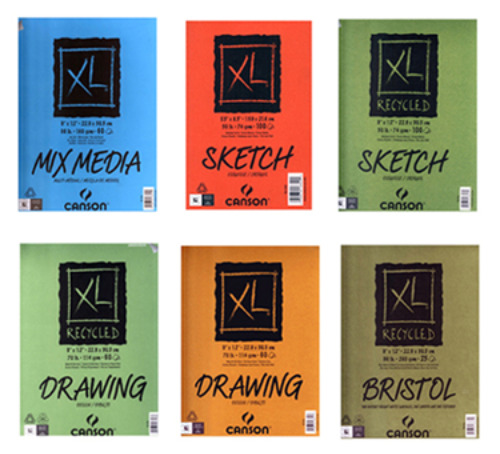I had the chance to try out a few pads of paper from their XL Series of artist pads. The XL series of art pads are made from recycled paper that contain at least 30% of post-consumer materials. I compared these papers to other artist pads I’ve tired and I’m impressed. The heavy duty bristol paper is a thick paper which is double sided where one side is smooth while the other is textured. The XL series Recycled Bristol pad would be perfect for sketching, doing artwork with pencil, crayon, ink, or charcoal. It is also suitable for watercolor or acrylic paint. The XL series Recycled Sketch pad is best suited for your basic sketching with pencil or crayon. Charcoal, pastels, and ink may also be used but it is more for pencil. I absolutely love the XL series recycled drawing pad because it has a big spiral top so you can easily flip pages and sketch on the go. It is perfect for the art student or traveling sketcher. This is a pad you can keep in your bag and take with you, so you can have it whenever inspiration strikes. These are great artist pads. I would use them (If my daughter didn’t already confiscate them for her fall art classes she’ll be starting soon). I do wish that they had a higher percentage of recycled materials in them but that might compromise the quality and texture of the paper. I know that some recycled paper feels very, very thin while others still feel very textured and less smooth, all of which can pose problems when you need a specific type of paper- say for art class. All of Canson’s papers are acid free, lignin free, and made without chlorine. Canson maintains rigorous control over their product manufacturing and production of materials to ensure consistency and performance. And they’ve stepped it up an eco-friendly notch by adding the Canson ecopledge (PDF) to their products. In addition to creating the XL series of recycled content papers, every Canson artist pad bears the Canson ecopledge, a symbol of their commitment to doing business responsibly. And while their logo may be new, the promise they make is not. They have long adhered to the stringent European environmental standards and have followed sustainable practices in their pursuit of manufacturing the highest-quality, long-lasting papers. These are the pledges they have made: So what do you think? Can recycled paper compare to regular paper when you need high quality, thick, textured, or smooth bright white papers? I think Canson proves that it can.
